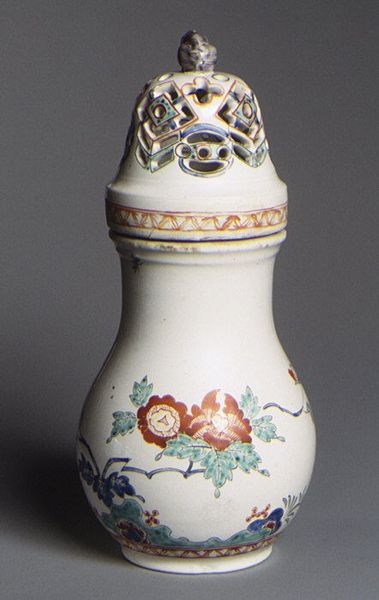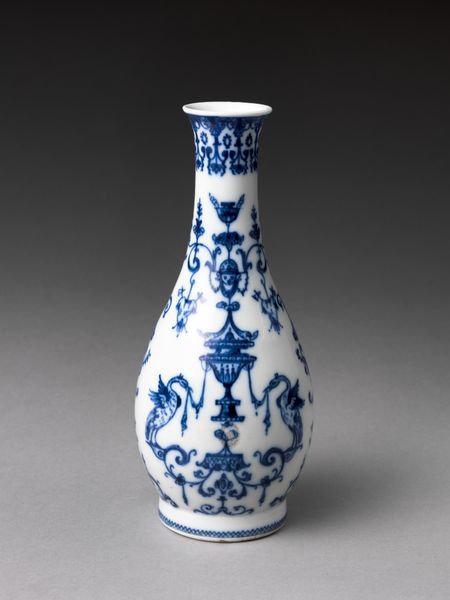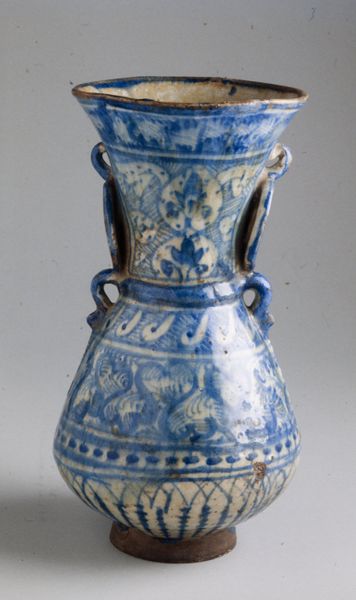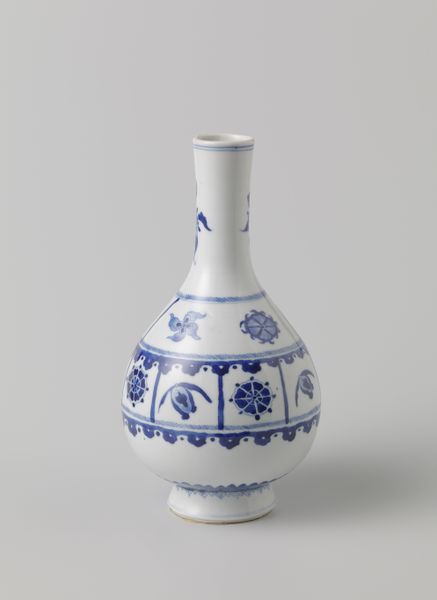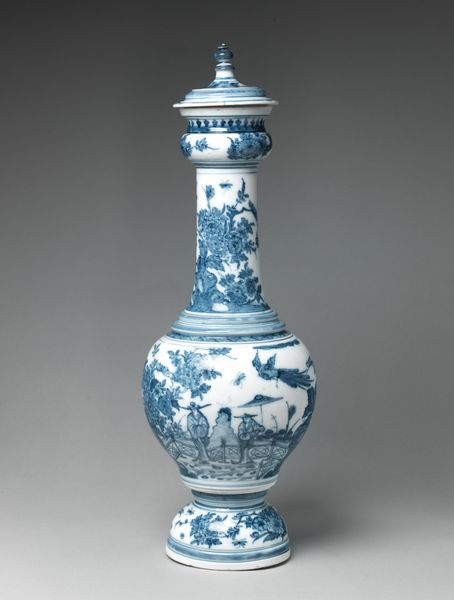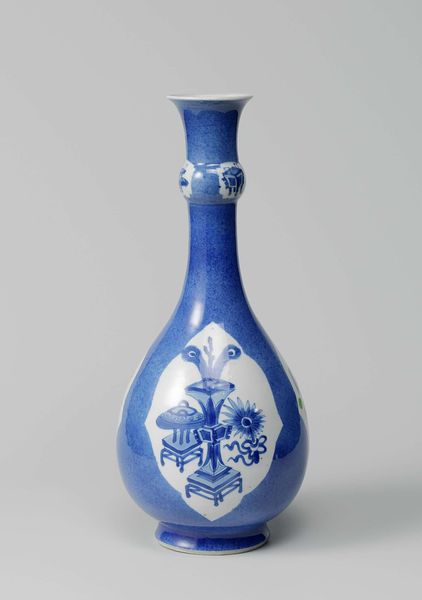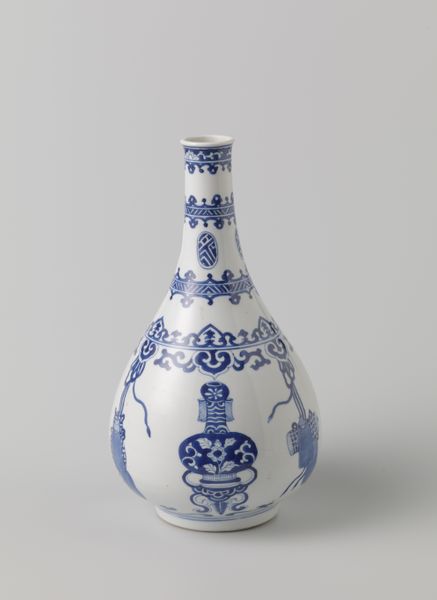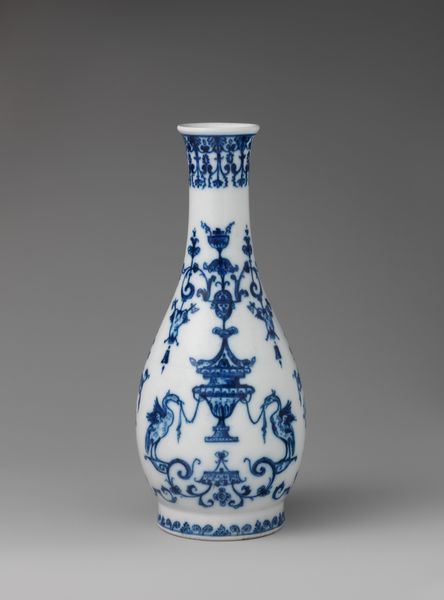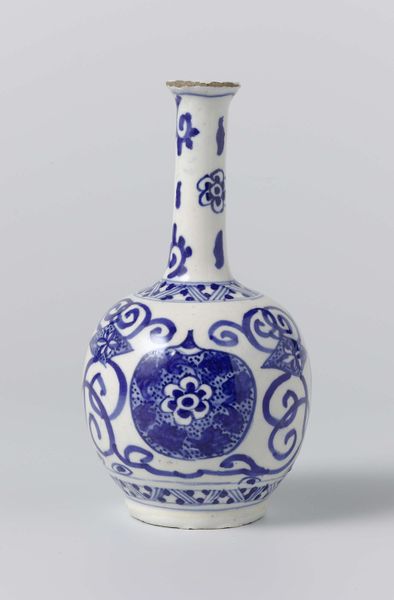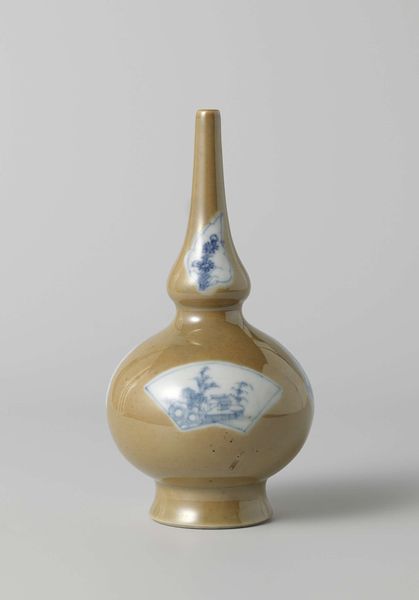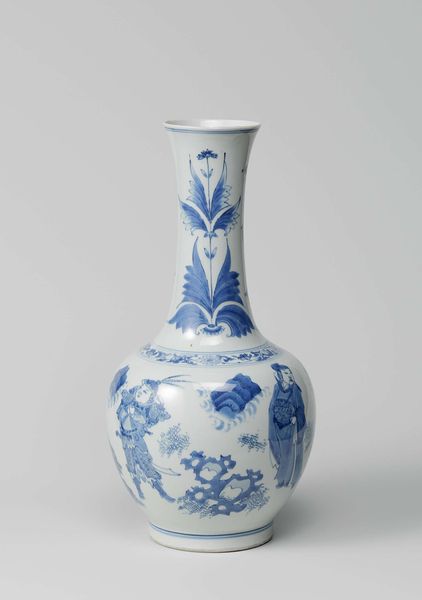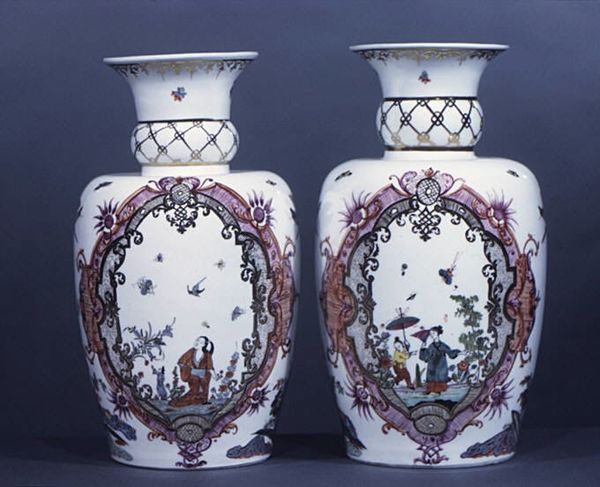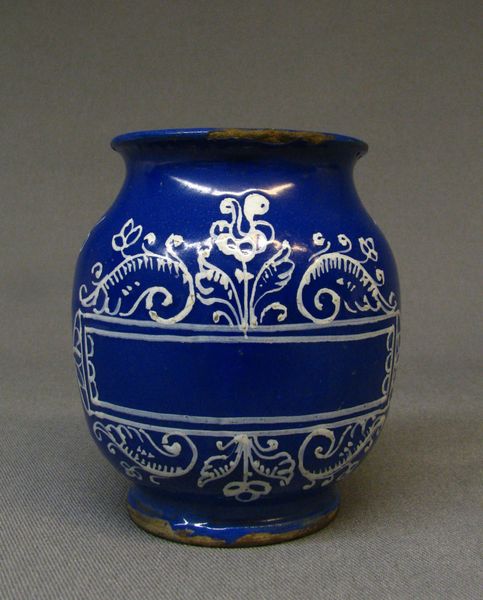
ceramic, porcelain, sculpture
#
ceramic
#
jewelry design
#
porcelain
#
stoneware
#
sculpture
#
ceramic
#
decorative-art
#
rococo
Dimensions: Height: 9 1/2 in. (24.1 cm)
Copyright: Public Domain
Curator: Looking at this object, the first thing that strikes me is a feeling of delicate elegance—it almost seems to be levitating due to its pale colour and sophisticated embellishments. Editor: And this, our listeners, is a sugar sifter crafted by Laufier-Ouéry between 1740 and 1750. It's currently housed here at the Metropolitan Museum of Art. Considering the era, how might sugar consumption factor into our understanding of its original owner? Curator: Well, we have to consider that in the 18th century, sugar was not just a commodity; it was a potent symbol of wealth and status. It connected directly to colonial economics and the horrors of slavery in the Caribbean. Owning such a refined piece meant directly benefiting from this system. Editor: It's remarkable how an object so seemingly innocent carries within it such heavy historical implications. Tell me about the symbolism in its decoration. What cultural narratives were they trying to evoke? Curator: The decorations lean heavily into Rococo aesthetics, with floral patterns, scrollwork, and those suggestive cherubic busts. All designed to project a vision of aristocratic grace. What seems important here is an assertion of leisure and cultivation entirely predicated on exploitative labor. Editor: The cobalt blue porcelain itself becomes part of the message, right? Blue and white ceramics are historically deeply coded—referencing the lineage of porcelain production and trade networks between Europe and Asia. Curator: Precisely. It is less about individual artistic expression, but about partaking in a long history of objectified wealth and class performance. That is to say, in my opinion, to possess this piece was also about embodying that continuity. Editor: It’s fascinating how an item intended for the intimate, almost ritualistic use, can speak so vividly of power, politics, and global economics. I had originally assumed the delicate decoration was only designed to elevate something like sweetness. Curator: Indeed, it’s a compelling reminder that objects often reflect the world around us, revealing uncomfortable truths about privilege and social inequity if we simply pay close enough attention. Editor: A sharp reminder of how even the most elegant and delightful pieces carry multifaceted narratives—some bright, others much darker.
Comments
No comments
Be the first to comment and join the conversation on the ultimate creative platform.
